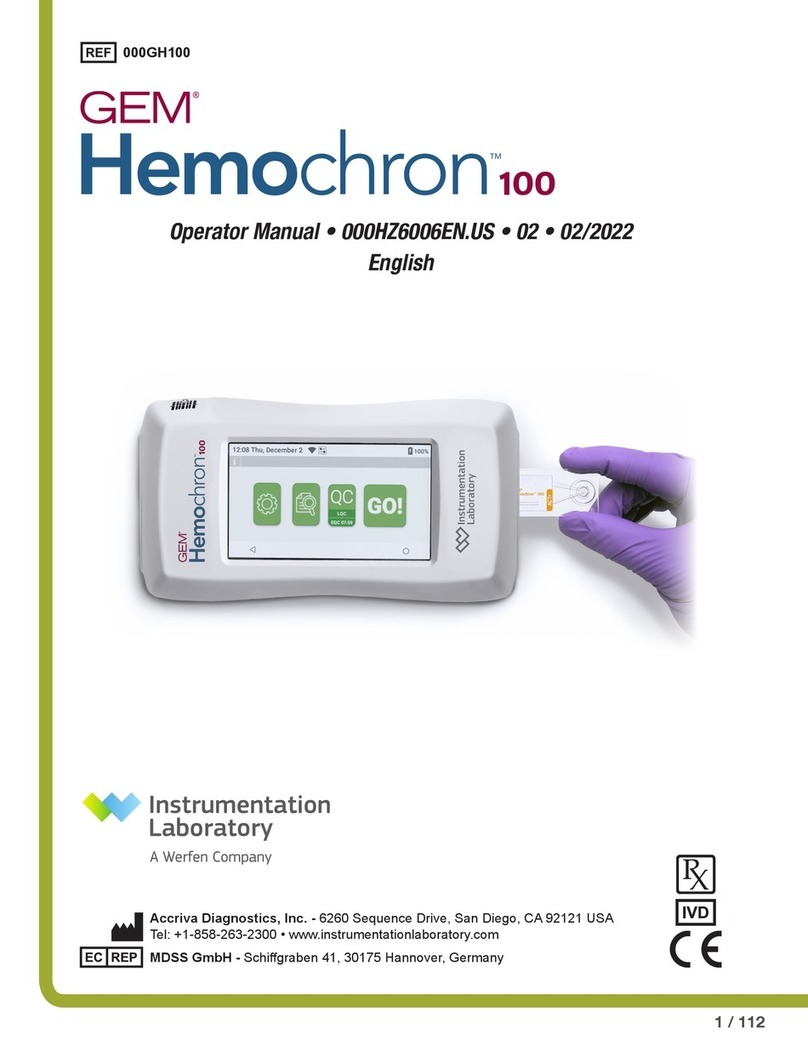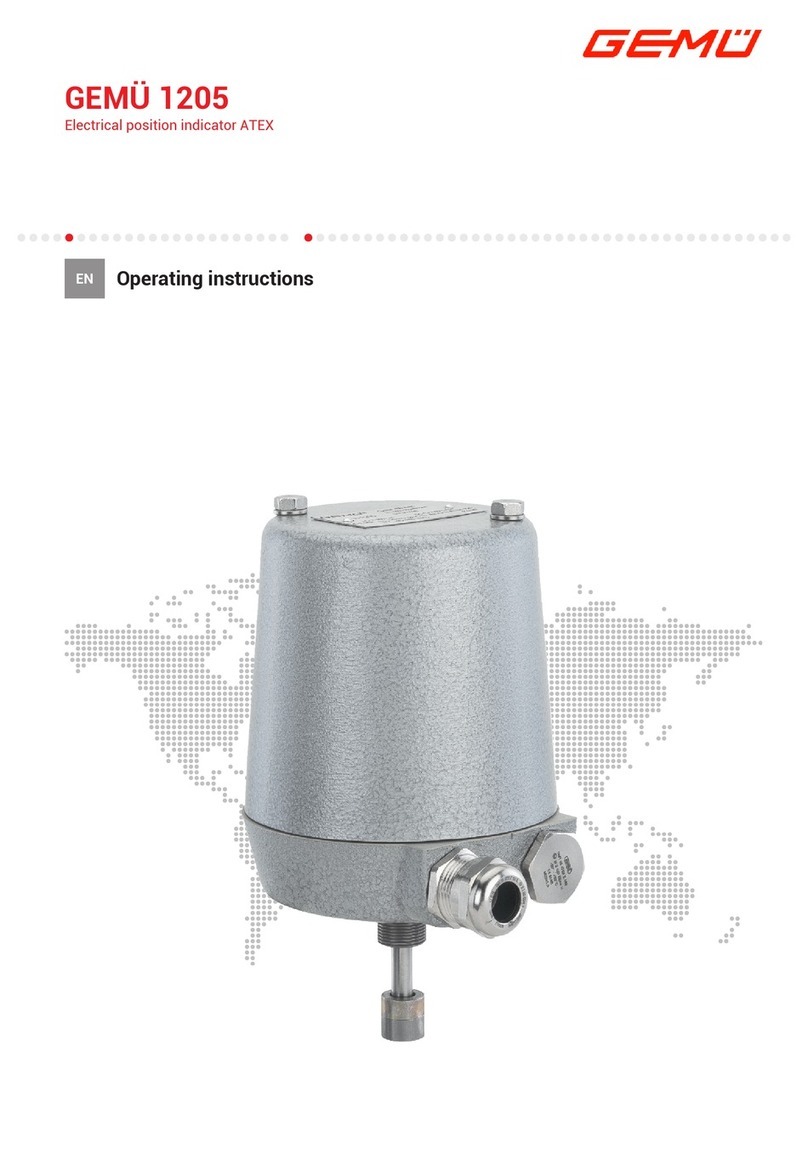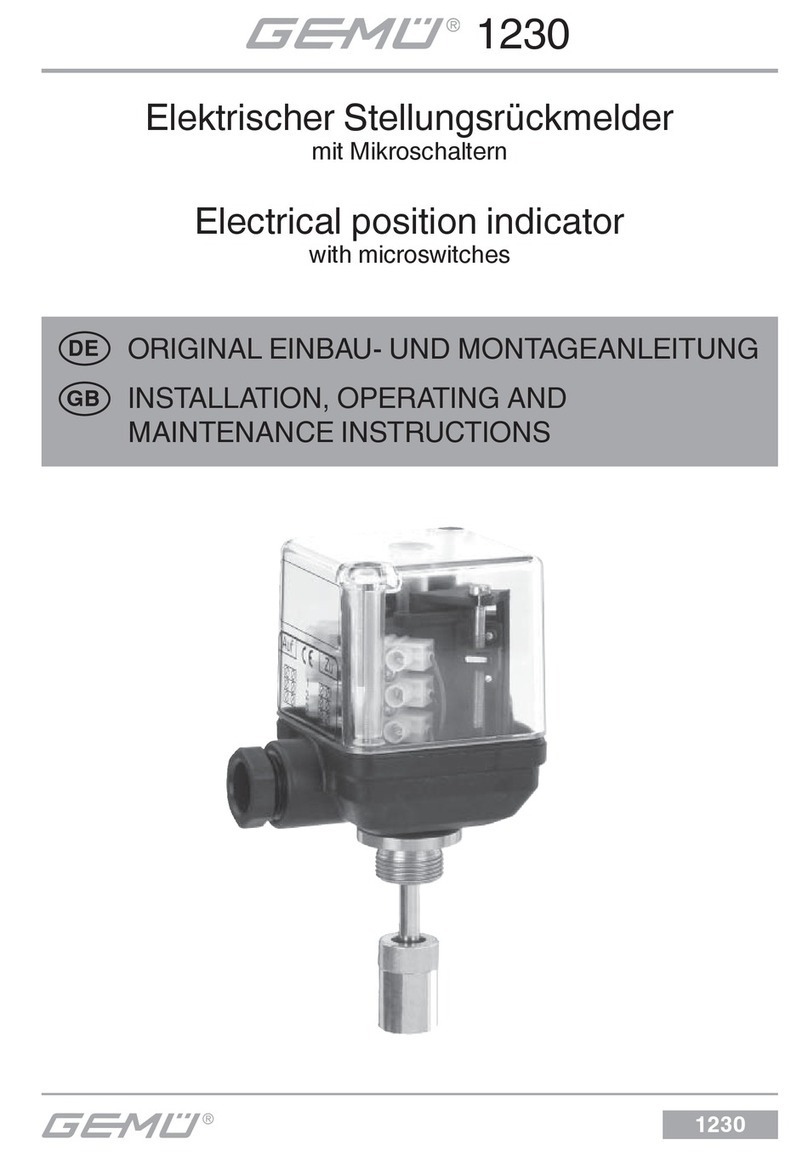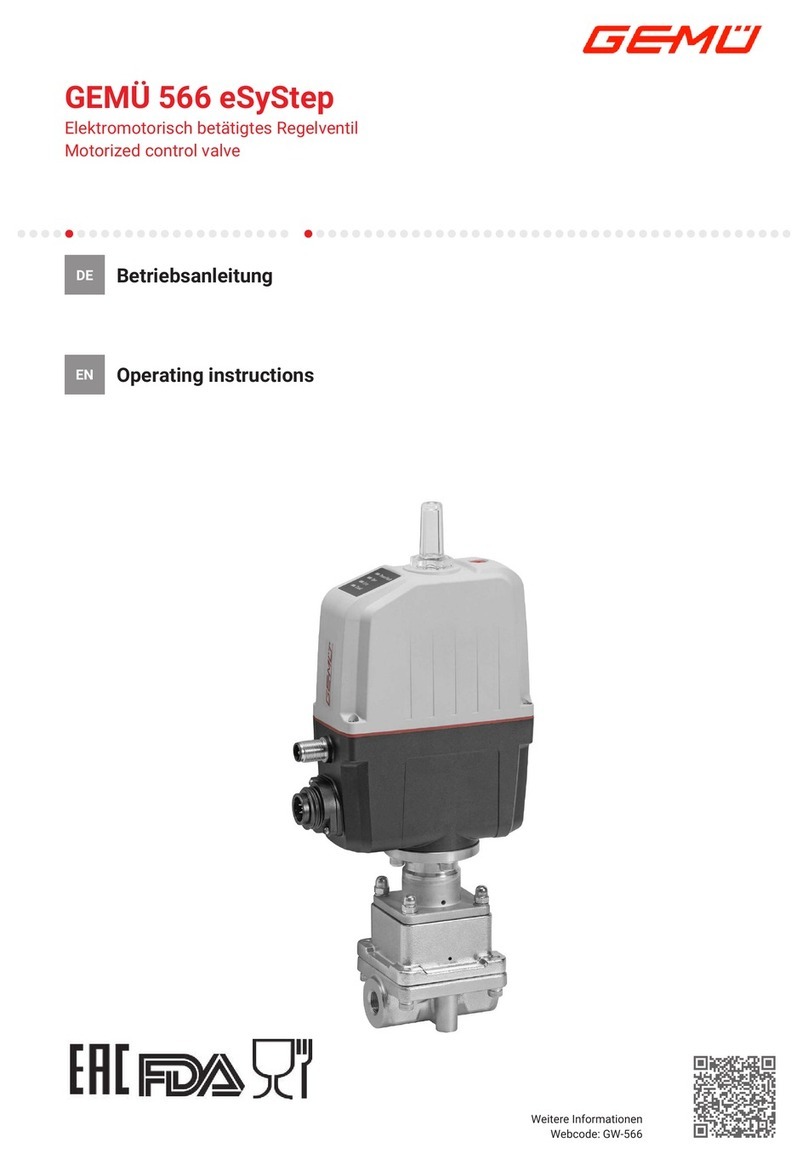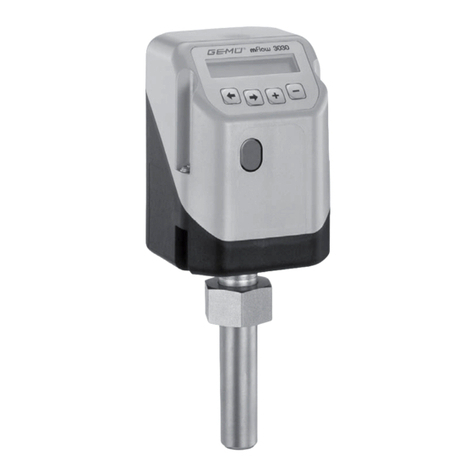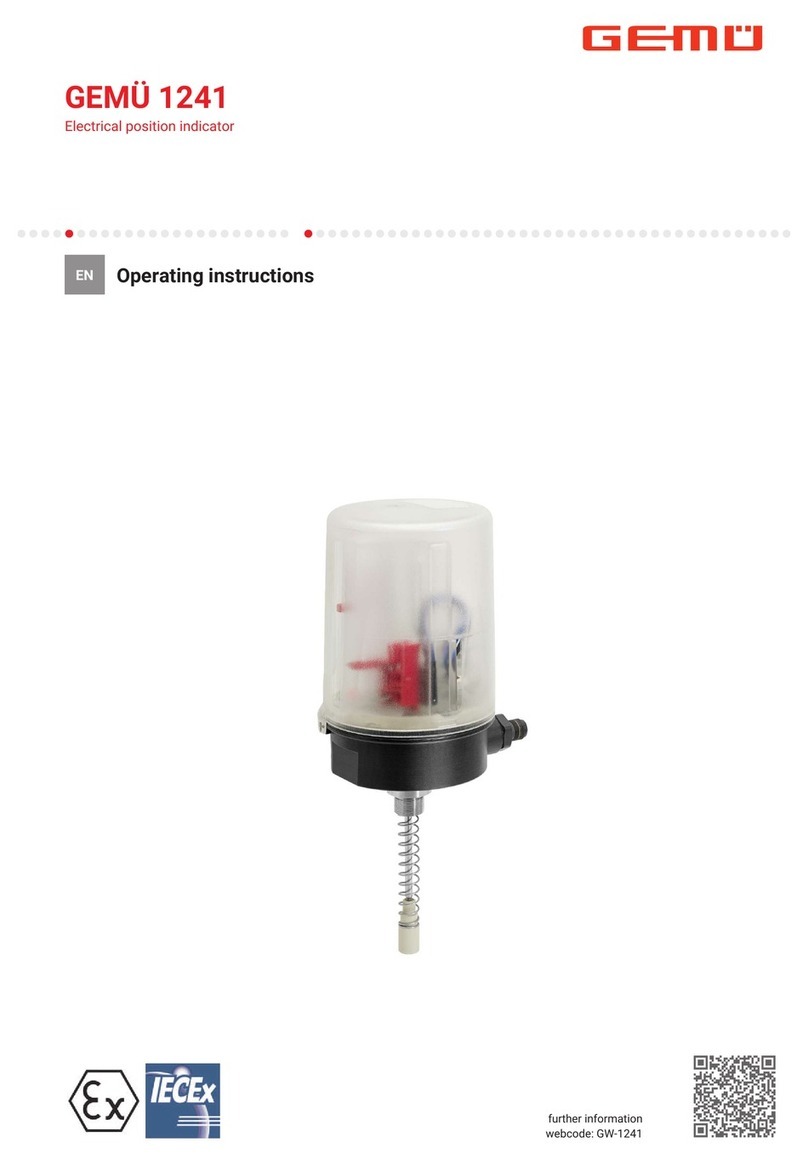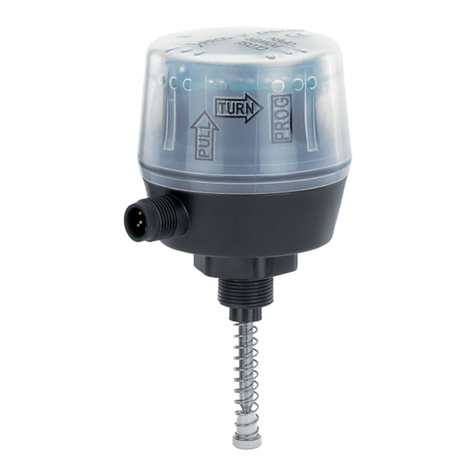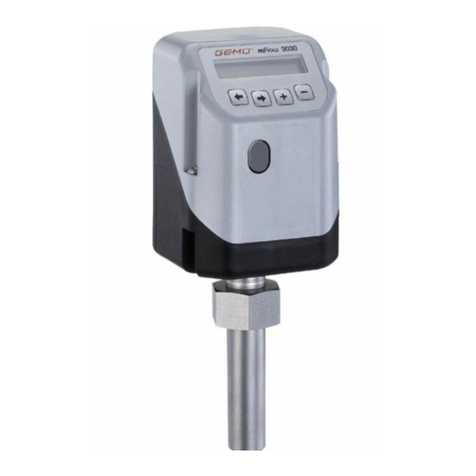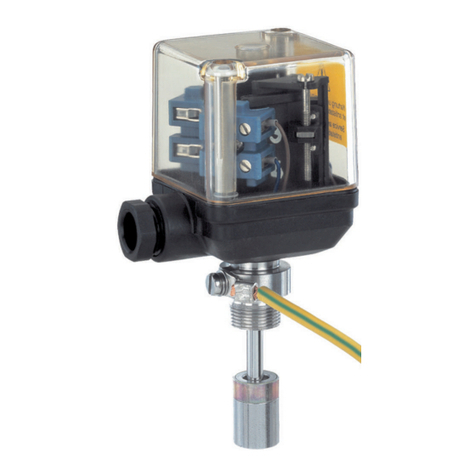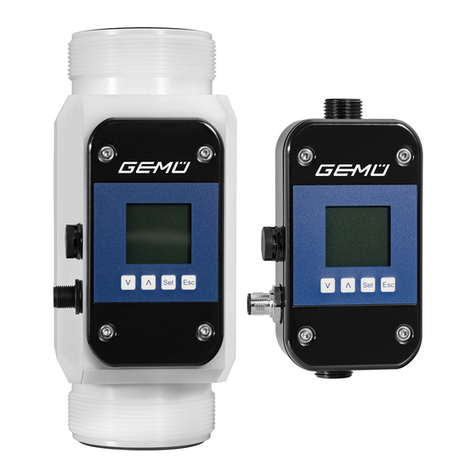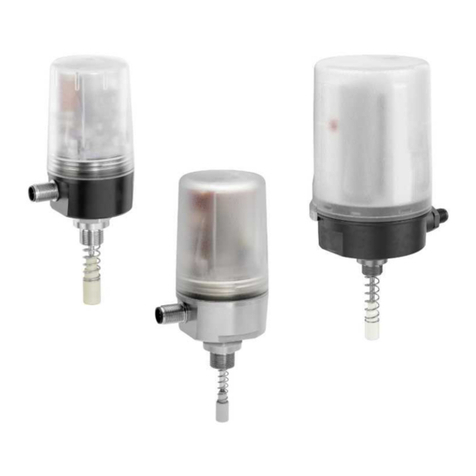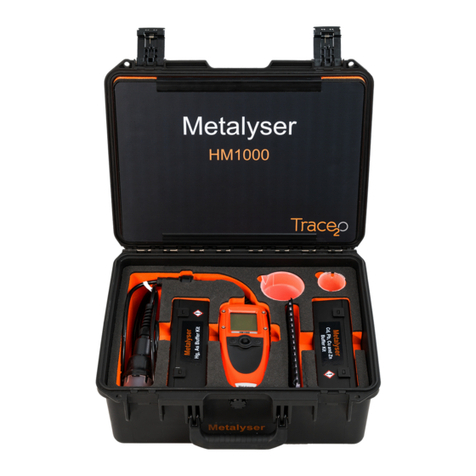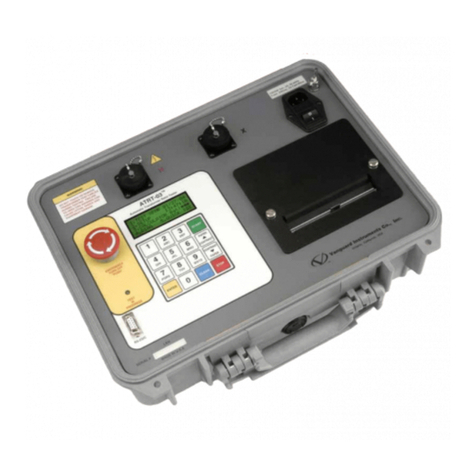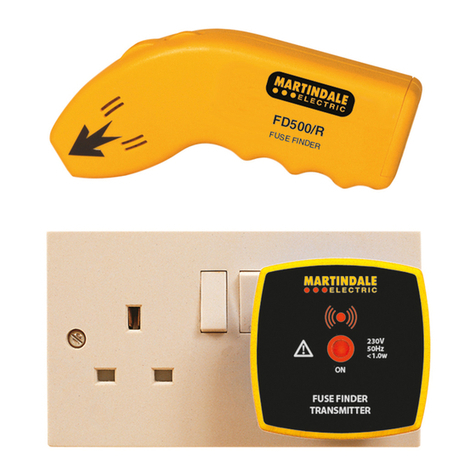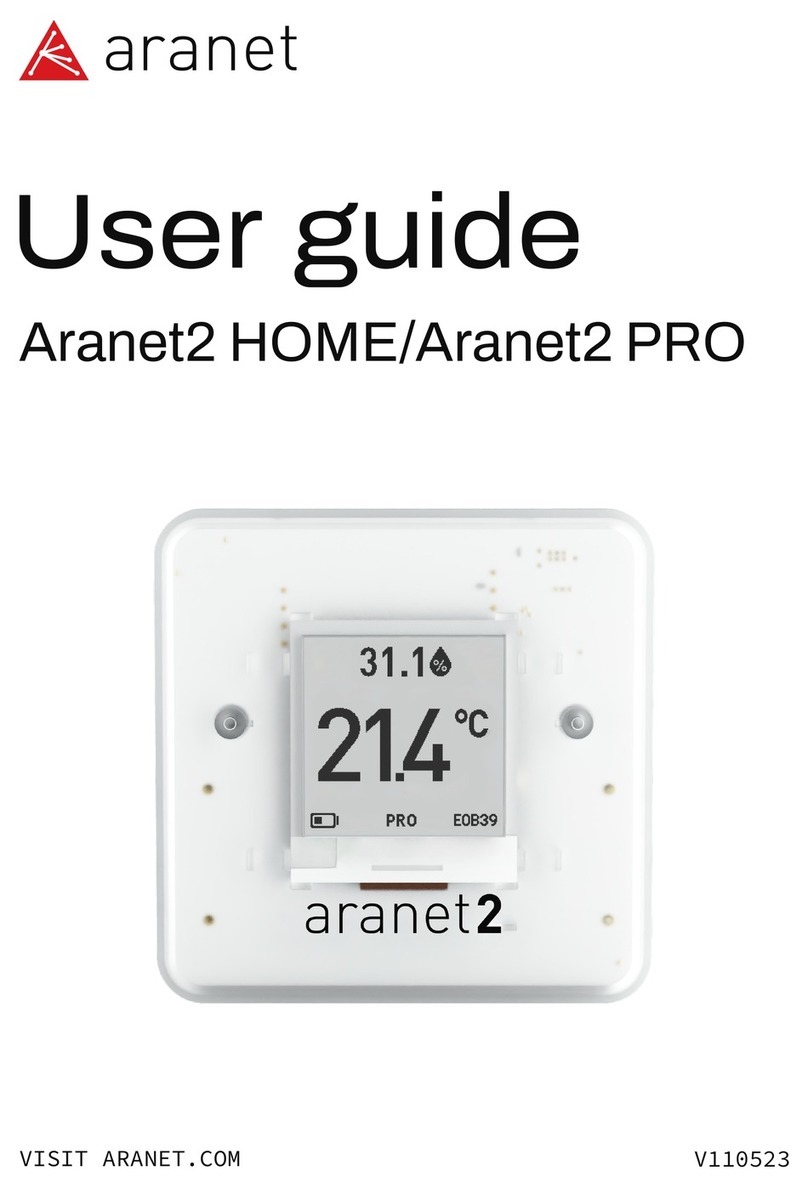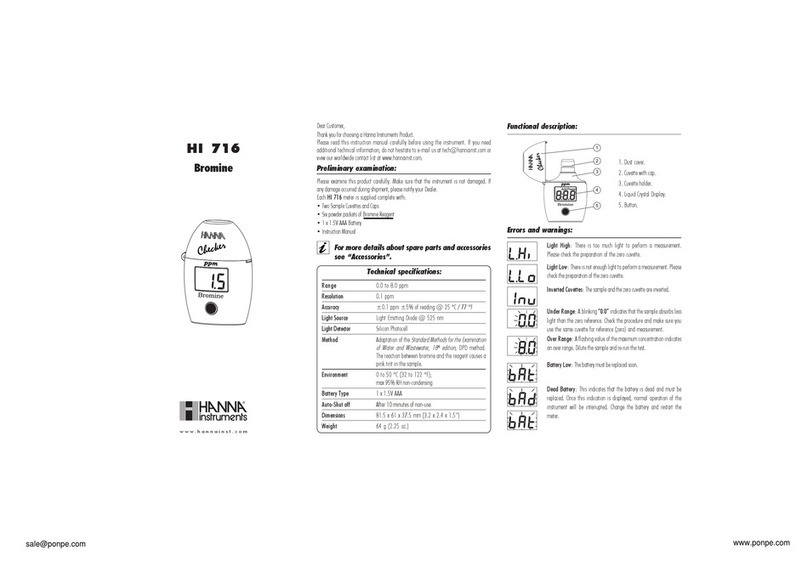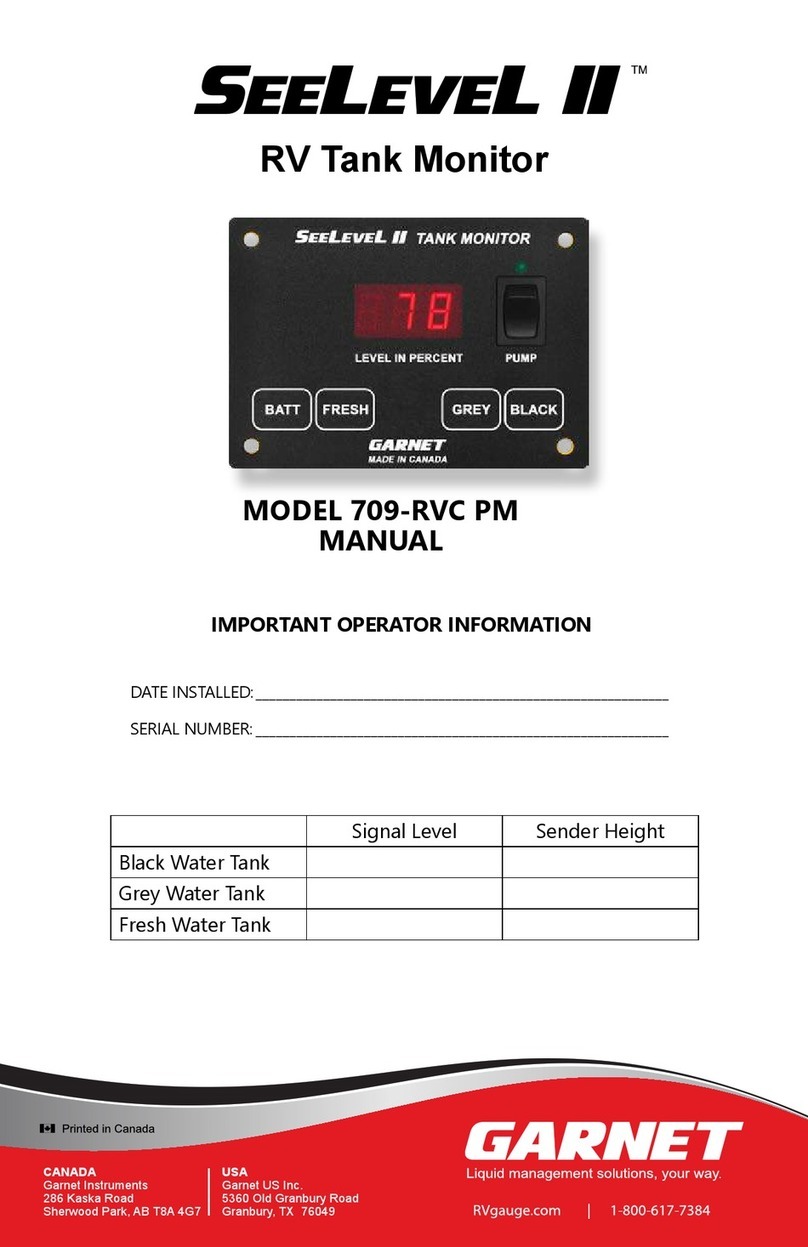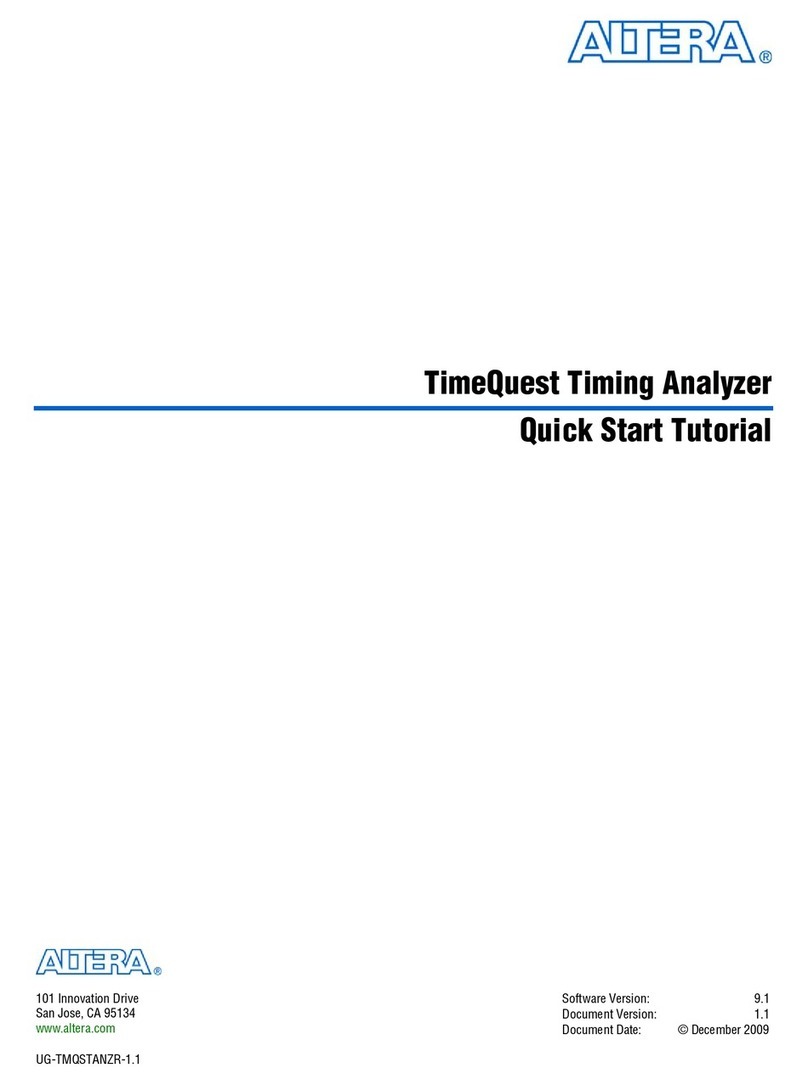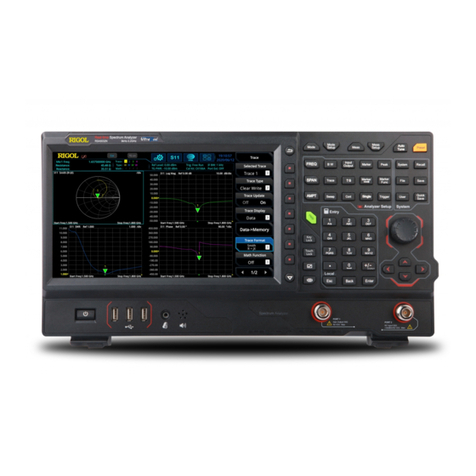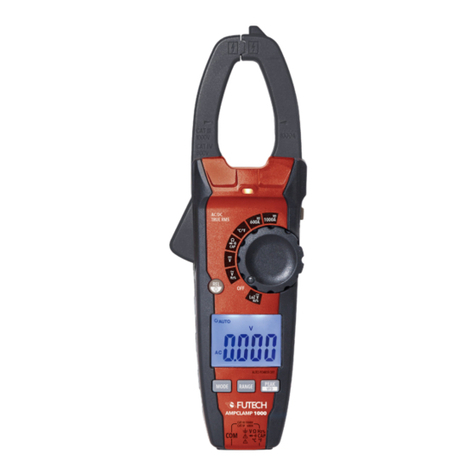GEM M2-1F User manual

Technical features:
• red display of -19999…99999 digits (optional: green, orange or blue display)
• minimal installation depth: 70 mm without plug-in terminal
•min-/maxmemory
• adjustment via factory default or directly on the sensor signal
• 30 adjustable setpoints
• display flashing at threshold undercut or exceedance
• Schmitt-trigger-input
• zero-key for triggering of HOLD, TARA…
• permanent min-/max-value recording
• digital frequency filter for contact bounce suppression and interference suppresion
• frequency filter with varying pulse-duty factor
• volume metering (totaliser) for frequencies up to 1 kHz (accurate to a pulse)
• mathematical function like reciprocal value, square root, rounding
• sliding averaging with an optional dynamic display filter
• setpoint generator
• brightness control
• programming interlock via access code
• protection class IP65 at the front
• plug-in terminal
• sensor supply
• galv. insulated digital input
• option: relay outputs
• option: analog output
• accessories: PC-based configuration-kit PM-TOOL incl. CD & USB.adapter for devices without keypad and
for a simple adjustment of standard devices
User manual M2-1F
Frequency input: 0,01 Hz to 999,99 kHz
Connection for Namur-, NPN-, PNP- and TTL-signals
96x48
M2_1FGB.pdf updated: 04.05.2012

Identification
M2-1FR5B.0307.570BD
M2-1FR5B.0007.670BD
Frequency
Housing size: 96x48 mm
ORDER NUMBERSTANDARD-TYPES
Please state physical unit by order, e.g. m/min.
Options – breakdown of order code:
M2-1 FR 5B.0007.672BD
Basic type M2 Dimension
D physical unit
Installation depth
89 mm, incl.plug-in terminal 2 Version
BB
Housing size
B96xH48xT70 mm 1 Setpoints
0 no setpoints
Type of display 2 2 relay outputs
Frequency F
Protection class
Display colour 1 without keypad,
Blue B operation on the back
Green G 7 IP65 / plug-in terminal
Red R
Yellow Y Voltage supply
4115VAC
Number of digits 5230VAC
5-di
g
it 5 6 10-30 VDC
g
alv.insulated
Digit height Measuring input
14 mm B1 0.01 Hz to 999.99 kHz
Digital input Analog output
without 0 0 without
one I X 0-10 VDC, 0/4-20 mA
Sensor supply
0 without
210VDC/20mA
incl. digital input
324VDC/50mA
incl. digital input
K24VDC/50mA
incl. digital input and
pulse out put (10 kHz only
with frequency measuring)

Contents
1
1. Brief descirption 2
2. Assembly 3
3. Electrical connection 4
4. Function description and operation 6
4.1. Programming software PM-TOOL 7
5. Setting up the device 8
5.1. Switching on 8
5.2. Standard parameterisation (flat operation level) 8
Value assignment for the triggering of the signal input
5.3. Programming interlock „RUN“ 12
Activation/Deactivation of the programming interlock or change into professional
or flat operation level
5.4. Extended parametersation (professional operation level) 13
5.4.1. Signal input parameters „INP“13
Value assignment for the triggering of the signal input incl. linearisation
5.4.2. General device parameters „FCT“17
Superior device functions like Hold, Tara, min/max permanent, setpoint value function /
nominal value function, averaging, brightness control, as well as the control of the digital input and
keyboard layout
5.4.3. Safety parameters „COD“21
Assignment of user and master code to lock or to receive access to defined parameter such as
analog output and alarms, etc.
5.4.4. Analog output parameters „Out“22
Analog output functions
5.4.5. Relay functions „rel“24
Parameter for setpoint definition
5.4.6. Alarm parameters „AL1…AL4“26
Actuator and dependencies of the alarms
5.4.7. Totaliser (Volume metering) „tot“28
Parameter for calculation of the sum function
6. Reset to factory settings 29
Reset parameters onto the delivery state
7. Alarms / Relays 30
Functional principle of the switching outputs
8. Programmer examples 31
Sample applications such as e.g. calculation of the input frequency or the adjustment at unknown rotation speed
9. Technical data 33
10. Safety advices 35
11. Error elimination 36

1. Brief description
2
1. Brief description
The panel meter instrument M2-1F is a 5-digit device for pulse signals, respectivley 2- and 3-wire
sensors. The configuration happens via four keys at the front. The integrated programming interlock
prevents unrequested changes of parameters and can be unlocked again with an individual code.
Optional the following functions are available: a supply for the sensor, a digital input for triggering of
Hold (Tara), one analog output or switching outputs for further evaluating in the unit.
The electrical connection is done via plug-in terminals on the back side.
Selectable functions like e.g. the recall of the min/max-value, an averaging of the measuring signals,
a nominal presetting or setpoint presetting, digital frequency filter for contact bounce suppression
and disturbance suppression with adjustable key relation, a direct threshold value regulation during
operation mode and further measuring setpoints for linearisation, complete the modern device
concept.

2. Assembly
3
2. Assembly
Please read the Safety advice on page 35 before installation and keep this user manual
for future reference.
Sealing
48,0
3,0
Installationdepthincl.plug-intermnal
M2
Gap for physical unit
89,0
1. After removing the fixing elements, insert the device.
2. Check the seal to make sure it fits securely.
3. Click the fixing elements back into place and tighten the clamping screws by hand.
Then use a screwdriver to tighten them another half a turn.
CAUTION! The torque should not exceed 0.1 Nm!
The dimension symbols can be exchanged before installation via a channel on the side!

3. Electrical connection
4
3. Electrical connection
Attention!
For devices with sensor supply, terminal clamps 4 and 8, aswell as 3 and 7 are connected galvanically in the
device.

5
3. Electrical connection
M3-devices
Below you find some connection examples with practical applications:

4. Function- and operation description
6
4. Function- and operation description
Operation
The operation is divided into three different levels.
Menu level (delivery status)
This level is for the standard settings of the device. Only menu items which are sufficent to set the
device into operation are displayed. To get into the professional level, run through the menu level
and parameterise “prof“ under menu item RUN.
Menu group level (complete function volume)
Suited for complex applications as e.g. linkage of alarms, setpoint treatment, totaliser function etc. In
this level function groups which allow an extended parameterisation of the standard settings are
availabe. To leave the menu group level, run through this level and parameterise „uloc„ under menu
item RUN.
Parameterisation level:
Parameter deposited in the menu item can here be parameterised. Functions, that can be changed
or adjusted, are always signalised by a flashing of the display. Settings that are made in the
parameterisation level are confirmed with [P] and thus safed. By pressing the „zero-key“ it leads to
a break-off of the value input and to a change into the menu level. All adjustments are safed
automatically by the device and changes into operating mode, if no further key operation is done
within the next 10 seconds.
Keys for up and down navigation in the menu group level.
Change to menu level.
Change into menu level or break-off in value input.
Parameterisation
level Adjustment of the value / the setting.
Keys for up and down navigation in the menu level.
DescriptionKey
Change into operation mode or back into menu level.
To confirm the changes made at the parameterization level.
Change into operation mode.
Change to parameterisation level and deposited values.
Menu group level
Menu level
Level

7
4. Function and operation description
Function chart:
4.1. Parameterisation software PM-TOOL:
Part of the PM-TOOL are the software on CD and an USB-cable with device adapter. The
connection is done via a 4-pole micromatch-plug on the back side of the device, to the PC-side the
connection ist done via an USB plug.
System requirements: PC incl. USB interface
Software: Windows XP, Windows VISTA
With this tool the device configuration can be generated, omitted and safed on the PC. The
parameters can be changed via the easy to handle program surface, whereat the operating mode
and the possible selection options can be preset by the program.

8
Setting end value of the measuring range, END:
Default: 100e3
Choose between six different frequency ranges. Confirm the selection with [P] and the display
switches back to menu level.
Setting the final value of the measuring range, END:
Default: 10000
Set the final value from the smallest to the highest digit with [▲] [▼] and confirm each digit with
[P]. A minus sign can only be parametrized on the highest value digit. After the last digit, the
display switches back to the menu level. If Sens was selected as input option, you can only
select between noca and cal.With noca, only the previously set display value is taken over, and
with cal, the device takes over both the display value and the analogue input value.
Selection of the input signal, TYPE:
Default: frequ
If the scaling of the device is done via SEnS.F (Sensor calibration), the frequency range needs to
be preset under rAnGE and is adjusted by application of the final value /initial value. If FrEqU
(Factory calibration) is preferred, the final value needs to be entered under End and the final
frequency needs to be entered under EndA. Under OFFS the initial value needs to be entered and
under OFFSA the initial frequency. There is no application of the measuring signal. Confirm the
selection with [P] and the display switches back to menu level.
Parameterisation levelMenu level
5.1. Switching-on
Once the installation is complete, you can start the device by applying the voltage supply. Before,
check once again that all electrical connections are correct.
Starting sequence
For 1 second during the switching-on process, the segment test (8 8 8 8 8) is displayed, followed by
an indication of the software type and, after that, also for 1 second, the software version. After the
starting sequence, the device switches to operation/display mode.
5. Setting up the device
5.2. Standard parameterisation: (flat operation level)
To parameterize the display, press the [P] key in operating mode for 1 second. The display then
changes to the menu level with the first menu item TYPE.
5. Setting up the device
9.9999 Hz 99.999 Hz 999.99 Hz 9.9999 kHz
99.999 kHz 999.99 kHz

9
5. Setting up the device
Rescaling the measuring input values, EndA:
Default: 10000
With this function, you can rescale the input value of e.g. 8.000 Hz (works setting) without
applying a measuring signal. If sensor calibration has been selected, these parameters are not
available.
Rescaling the measuring input values, OFFA:
Default: 0
With this function, you can rescale the input value of e.g. 100 Hz (works setting) without
applying a measuring signal. If sensor calibration has been selected, these parameters are not
available.
Setting up the display time, SEC:
Default: 1.0
The display time is set with [▲] [▼]. The display moves up in increments of 0.1 sec up to 1 sec
and in increments of 1.0 sec up to 10.0 sec. Confirm the selection by pressing the [P] button.
The display then switches back to the menu level again.
Setting the decimal point, dot:
Default: 0
The decimal point on the display can be moved with [▲] [▼] and confirmed with [P]. The
display then switches back to the menu level again.
Setting the start/offset value of the measuring range, offs:
Default: 0
Enter the start/offset value from the smallest to the highest digit [▲] [▼] and confirm each digit
with [P]. After the last digit the display switches back to the menu level. If Sens.F was selected
as the input option, you can only select between noca and cal.With noca, only the previously set
display value is taken over, and with cal, the device takes over both the display value and the
analogue input value.
Parameterisation levelMenu level
then

10
5. Setting up the device
Setting up the final value of the analog output, Out.En:
Default: 10000
The final value is adjusted from the smallest digit to the highest digit with [▲] [▼]and digit by
digit confirmed with [P]. A minus sign can only be parameterised on the highest digit. After the
last digit, the device changes back into menu level.
Setting up the initial value of the analog output, Out.OF:
Default: 00000
The final value is adjusted from the smallest digit to the highest digit with [▲] [▼]and digit by
digit confirmed with [P]. A minus sign can only be parametrised on the highest digit. After the
last digit, the device changes back into menu level.
Selection of analog output, Out.rA:
Default: 4-20
Three output signals are available: 0-10 VDC, 0-20 mA and 4-20 mA, with this function, the
demanded signal is selected.
Adjustment of the optimum digital frequency filter, fi.frq:
Default: NO
If the optional filter is not activated by the adjustment „No“, frequences are ignored by the
adjusted frequency filter. Act on the assumption that the pulse-duty factor is 1:1. Accordingly
the minimal pulse duration is derived from the half of the time of oscillation. Use a filter of 10 Hz
or 20 Hz for contact bounce suppression.
Setting of the pulse delay, dELAY:
Default: 0
With the impulse delay of 0 – 250 s (max), frequencies can be collected, which are even
smaller than by the predetermined measuring time of the device. If e.g. a delay of 250 seconds
is set, this means that the device waits up to 250 seconds for an edge, before it assumes a 0
Hz-frequency. Thus frequencies up to 0.004 Hz can be collected.
Parameterisation levelMenu level

11
5. Setting up the device
Hysteresis for limit values, HY-2:
Default: 00000
The delayed reaction of the alarm is the difference to the threshold value, which is
defined by the hysteresis.
Threshold values / Limits, LI-2:
Default: 3000
This value defines the threshold, that activates/deactivates an alarm.
Function if display falls below / exceeds limit value, FU-1:
Default: high
The limit value undercut can be selected with Louu (LOW = lower limit value) and limit value
exceedance can be selected with high (HIGH = upper limit value). If e.g. limit value 1 is on a
switching threshold of 100 and occupied with function „high“, the alarm will be activated by
reaching the threshold. If the limit value is allocated to „Low“, an alarm will be activated by
undercut of the threshold. See page 29.
Hysteresis for limit values, HY-1:
Default: 00000
For all limit values exists a hysteresis function, that reacts according to the settings (threshold
exceedance / threshold undercut).
Function for threshold value undercut /exceedance, Fu-2:
Default: high
A limit value undercut is selected with Louu (for LOW = lower limit value), a limit value
exceedance with High (for HIGH = higher limit value). If e.g. limit value 1 is on a threshold level
of 100 and allocated with function High, an alarm is activated by reaching of the threshold level.
If the threshold value was allocated to Low, an alarm will be activated by undercutting the
threshold value, as long as the hysteresis is zero.
Threshold values / limit values, LI-1:
Default: 2000
For both limit values, two different values can be parameterized. With this, the parameters for
each limit value are called up one after another.
Parameterisation levelMenu level

12
5. Setting up the device
5.3. Programming interlock „run“
Master code (4-digit number-combination free available), A.CodE:
Default: 1234
With this code, all parameters can be unlocked, if LOC has been activated before under menu
item run. By pushing [P] during operation mode for approx. 3 seconds, Code appears in the
display. The user can now reach all parameters by entering A.codE. Leaving the parametrisation,
under menu item run, the user can unlock them permanently by choosing ULOC or ProF. So,
there is no need for anew code entering, even by pushing [P] during operation mode again.
Activation / deactivation of the programming lock or completion of the standard
parameterization with change into menu group level (complete function range), run:
Default: uloc
With the navigation keys [▲] [▼], you can choose between the deactivated key lock Uloc
(works setting) and the activated key lock Loc, or the menu group level ProF. Confirm the
selection with [P]. After this, the display confirms the settings with "-----", and automatically
switches to operating mode. If Loc was selected, the keyboard is locked. To get back into the
menu level, press [P] for 3 seconds in operating mode. Now enter the CODE (works setting 1 2 3
4) that appears using [▲] [▼] plus [P] to unlock the keyboard. FAIL appears if the input is
wrong.
To parameterise further functions ProF needs to be set. The device confirms this setting with
„-----„and changes automatically in operation mode. By pressing [P] for approx. 3 seconds
in operation mode, the first menu group InP is shown in the display and thus confirms the
change into the extended parameterisation. It stays activated as long as ULOC is entered in
menu group RUN , thus the display is set back in standard parameterisation again.
User code (4-digit number-combination, free available), U.CodE:
Default: 0000
If this code is set (>0000), all parameters are locked, if LOC has been selected before under
menu item run. By pushing [P] during operation mode for approx. 3 seconds, Code appears in
the display. To get to the unlocked reduced parameter, the user needs to enter the preset
U.Code. This code has to be entered before each parametrisation, until the A.Code (Master code)
unlocks all parameters again.
Parameterisation levelMenu level

5. Setting up the device
13
5.4. Extended parametrisation (Professional operation level)
Setting the final value of the measuring range, END:
Default: 10000
Set the final value from the smallest to the largest digit with [▲] [▼] and confirm each digit with
[P]. A minus sign can only be parameterized on the highest value digit. After the last digit, the
display switches back to the menu level. If Sens was selected as input option, you can only
select between noca and cal.With noca, only the previously set display value is taken over, and
with cal, the device takes over both the display value and the analogue input value.
Setting the end value of the measuring range, END:
Default: 100e3
Choose between six different frequency ranges. Confirm the selection with [P] and the display
switches back to menu level.
Selection of the input signal, TYPE:
Default: frequ
If the scaling of the device is done via SEnS.F (Sensor calibration), the frequency range needs to
be preset under rAnGE and is adjusted by application of the final value /initial value. If FrEqU
(Factory calibration) is preferred, the final value needs to be entered under End and the final
frequency needs to be entered under EndA. Under OFFS the initial value needs to be entered and
under OFFSA the initial frequency. There is no application of the measuring signal. Confirm the
selection with [P] and the display switches back to menu level.
Parameterisation levelMenu level
Menu group level
Menu level
5.4.1. Signal input parameters
9.9999 Hz 99.999 Hz 999.99 Hz 9.9999 kHz
99.999 kHz 999.99 kHz

14
5. Setting up the device
Rescaling the measuring input values, OFFA:
Default: 0
With this function, you can rescale the input value of e.g. 100 Hz (works setting) without
applying a measuring signal. If sensor calibration has been selected, these parameters are not
available.
Rescaling the measuring input values, EndA:
Default: 10000
With this function, you can rescale the input value of e.g. 8.000 Hz (works setting) without
applying a measuring signal. If sensor calibration has been selected, these parameters are not
available.
Setting up the display time, SEC:
Default: 1.0
The display time is set with [▲] [▼]. The display moves up in increments of 0.1 sec up to 1 sec
and in increments of 1.0 sec up to 10.0 sec. Confirm the selection by pressing the [P] button.
The display then switches back to the menu level again.
Setting the decimal point, dot:
Default: 0
The decimal point on the display can be moved with [▲] [▼] and confirmed with [P]. The
display then switches back to the menu level again.
Setting the start/offset value of the measuring range, offs:
Default: 0
Enter the start/offset value from the smallest to the highest digit [▲] [▼] and confirm each digit
with [P]. After the last digit the display switches back to the menu level. If Sens.F was selected
as the input option, you can only select between noca and cal.With noca, only the previously set
display value is taken over, and with cal, the device takes over both the display value and the
analogue input value.
Parameterisation levelMenu level
then

15
5. Setting up the device
Number of additional setpoints, SPCt:
Default: 00
30 additional setpoints can be defined to the initial- and final value, so linear sensor values are
not linearised. Only activated setpoint parameters are displayed.
Setting up the tare/offset value, tArA:
Default: 0
The given value is added to the linerarized value. In this way, the characteristic line can be
shifted by the selected amount.
Adjustment of the pulse-duty factor at activated digital filter, fi.rat:
Default: i-i
Adjustment of the desired pulse-duty factor for pulse duration and pulse interruption. Like this, a
special pulse behaviour can be adjusted.
Adjustment of the optimum digital frequency filter, fi.frq:
Default: NO
If the optional filter is not activated by the adjustment „No“, frequences are ignored by the
adjusted frequency filter. Act on the assumption that the pulse-duty factor is 1:1. Accordingly
the minimal pulse duration is derived from the half of the time of oscillation. Use a filter of 10 Hz
or 20 Hz for contact bounce suppression.
Setting up the pulse delay, dELAY:
Default: 0
With the pulse delay of 0 – 250 s (max), frequencies can be collected, which are even smaller
than by the predetermined measuring time of the device. If e.g. a delay of 250 seconds is set,
this means that the device waits up to 250 seconds for an edge, before it assumes a 0 Hz-
frequency. Thus frequencies up to 0.004 Hz can be collected.
Parameterisation levelMenu level

5. Setting up the device
16
Input variable of process value, SIG.in:
Default: a.meas
This parameter controls the device via the analog input signals a.meas = Sens.f repectively fre9u
or via the digital signals of the interface M.bus = RS232/RS485 (Modbus protocol). Confirm the
selction with [P] and the device changes back into menu level.
Display values for setpoints, dIS.01 … dIS.30:
Under this parameter setpoints are defined according to their value. At the sensor calibration,
like at Final value/Offset, one is asked at the end if a calibration shall be activated.
Analog values for setpoints, InP.01 … InP.30:
These setpoints are displayed at works setting (4-20 mA) only. Here, demanded analog values
can be choosen freely. The input of steadily rising analog values needs to be done self-
contained.
Back to menu group level, rEt:
With [P] the selection is confirmed and the device changes into menu group level „–INP-“.
Display overflow, dI.OUE:
Default: 99999
With this function the display overflow (_ _ _ _ _) can be defined on a definite value.
Display underflow, dI.Und:
Default: -19999
With this function the device undercut (_ _ _ _ _) can be defined on a definite value.
Parameterisation levelMenu level

5. Setting up the device
17
5.4.2. General device parameters
Arithmetic, ArItH:
Default: no
With this function the calculated value, not the measuring value, is shown in the display. With
no , no calulation is deposited. With [P] the selection is confirmed and the device changes into
menu level.
Sliding average determination, AVG:
Default: 10
Here, the number of the meterings that need to be averaged is preset. The time of averaging
results of the product of measuring time SEC and the averaged metering AVG. With the selection
of AVG in the menu level DISPL, the result will be shown in the display and evaluated via the
alarms.
Rounding of display values, round:
Default: 00001
This function is for instable display values, where the display value is changed in 1-, 5-, 10- or
50-steps. This does not affect the resolution of the optional outputs. With [P] the selection is
confirmed and the device changes into menu level.
Display time, DISEC:
Default: 01.0
The display is set up with [▲] [▼]. Thereby on switches until 1 second in 0.1 steps and until
10.0 seconds in 1.0-steps. With [P] the selection is confirmed and the device changes into
menu level.
Parameterisation levelMenu level
Menu group level
Menu level
then
Reciprocal Root extraction Square

5. Setting up the device
18
Definite contstant value, const:
Default: 0
The constant value can be evaluated via the alarms or via the analog output, like the current
measurand. The decimal place cannot be changed for this value and is taken over by the
current measurand. Like this a setpoint generator can be realised via the analog output by this
value. Furthermore it can be used for calculating the difference. At this the constant value is
substracted from the current measurand and the difference is evaluated in the alerting or by the
analog output. Thus regulations can be displayed quite easily.
Minimum constant value, con.mi:
Default: -i9999
The minimum constant value is adjusted from the smallest to the highest digit with the
navigation keys [▲] [▼] and confirmed digit per digit with [P]. A minus sign can only be
adjusted on the highest digit. After the last digit the display changes back into menu level.
Maximum constant value, con.ma:
Default: 99999
The maximum constant value is adjusted from the smallest to the highest digit with the
navigation keys [▲] [▼] and confirmed digit per digit with [P]. A minus sign can only be
adjusted on the highest digit. After the last digit the display changes back into menu level.
Zero point slowdown, ZErO:
Default: 00
At the zero point slowdown, a value range around the zero point can be preset, so the display
shows a zero. If e.g. a 10 is set, the display would show a zero in the value range from -10 to
+10; below continue with -11 and beyond with +11.
Dynamic for the sliding average determination, step:
Default: no
With step the sliding average determination can be adjusted dynamically. If 6pro or 12pro is
selected, a frequency value with a variance of 6% or 12% of the current display value is taken
over directly for the sliding averaging. The display appears to be more dynamic at a fast
frequency change, without appearing disturbed by a slightly unsteady frequency.
Parameterisation levelMenu level
Table of contents
Other GEM Measuring Instrument manuals
Popular Measuring Instrument manuals by other brands
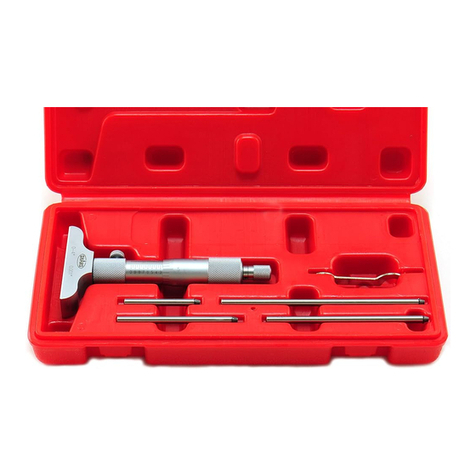
shars
shars 303-2503 Operation manual
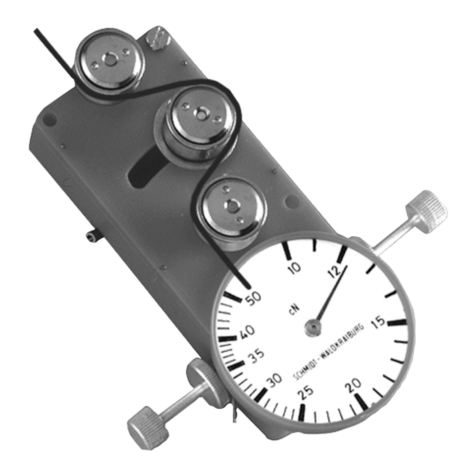
Schmidt
Schmidt MK-12 operating instructions

Nonin
Nonin 7600 Operator's manual
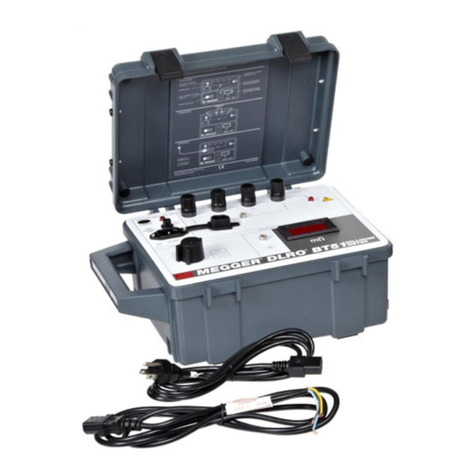
Megger
Megger BT51 user guide
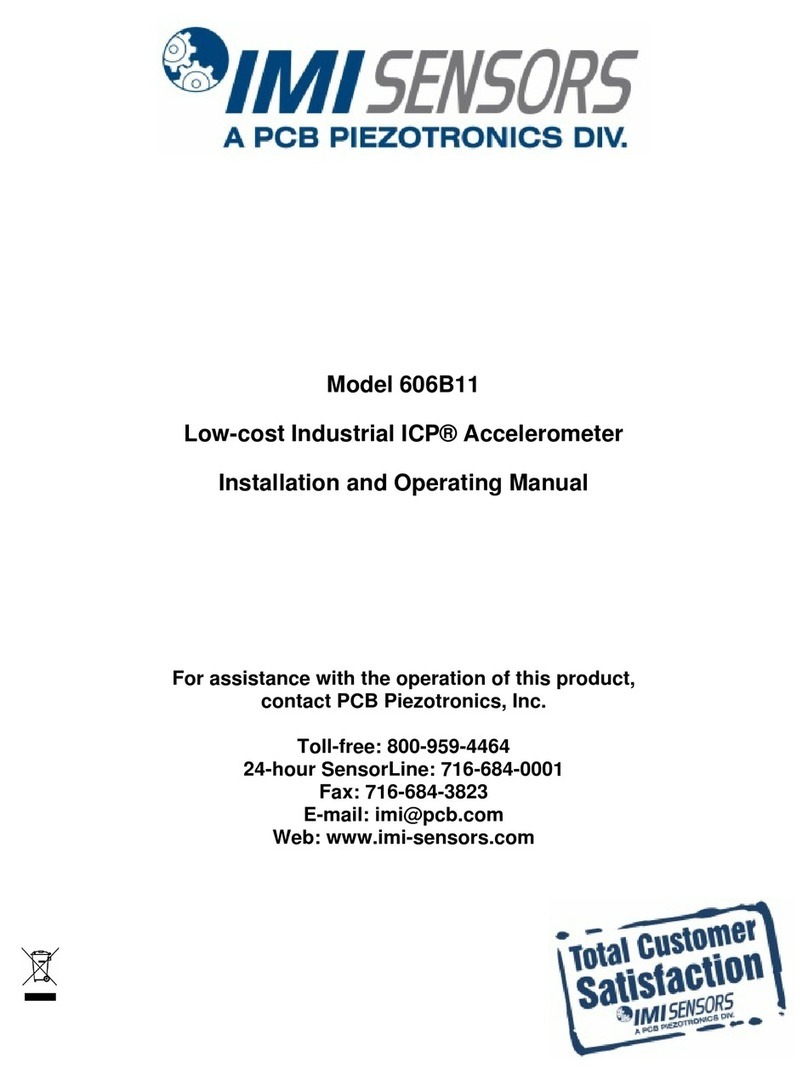
PCB Piezotronics
PCB Piezotronics IMI SENSORS 606B11 Installation and operating manual
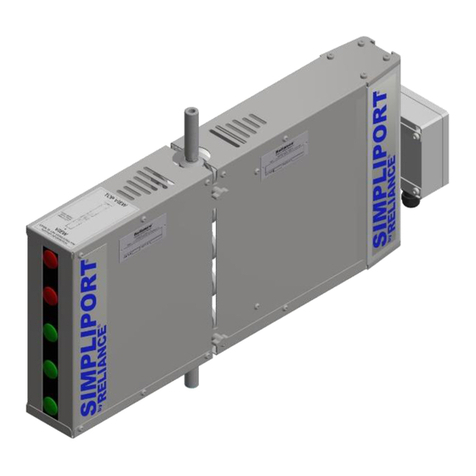
Reliance
Reliance Simpliport 180 Installation, operation & maintenance instructions
